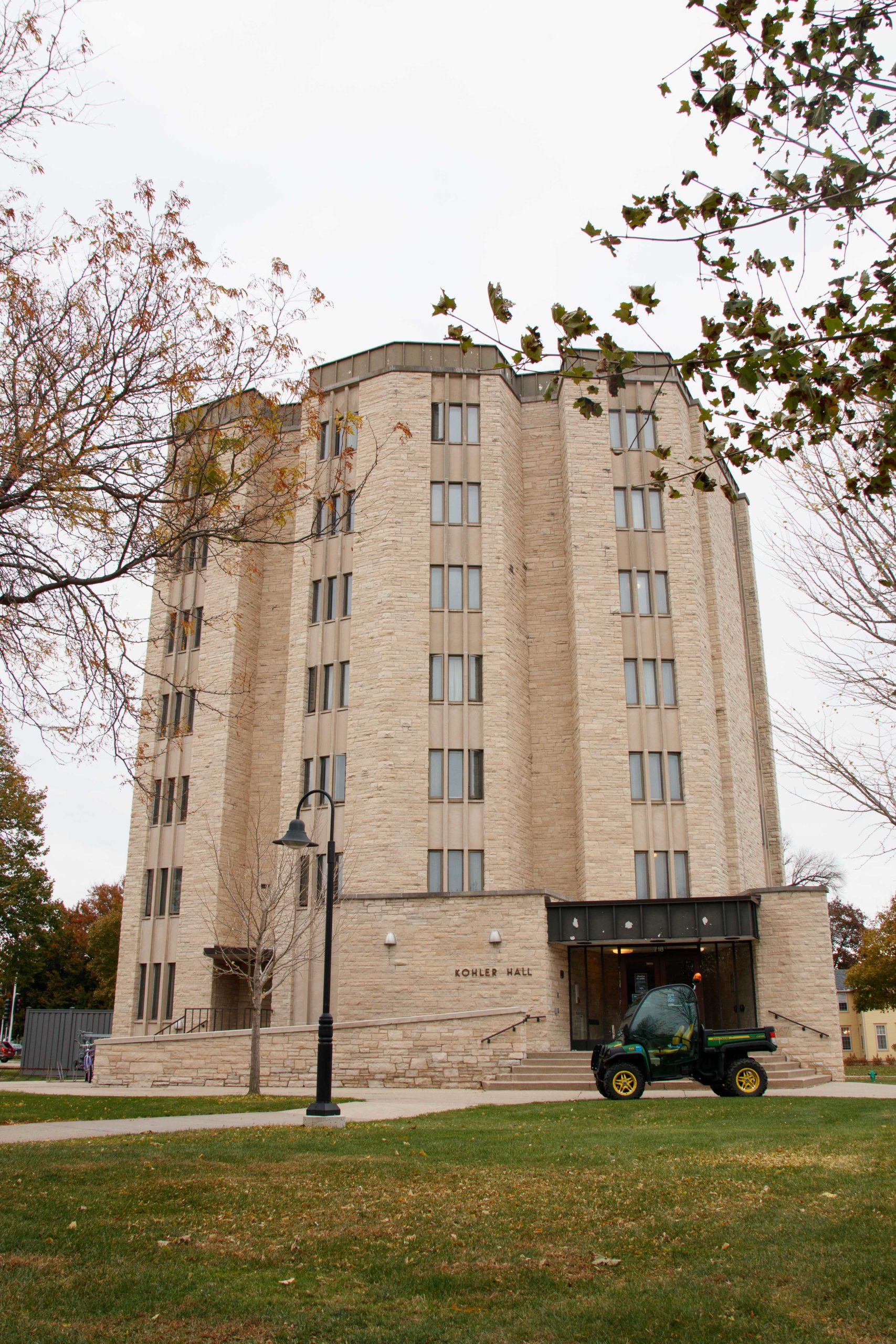Kohler Hall, pictured below, has become the temporary home for students who have tested positive for COVID-19, as well as students who may have been exposed.
Photo by Sebastian Evans.
*names changed to protect identities
The last batch of COVID-19 tests administered for students and staff proved to display a spike in positive cases. With this increase of positive cases, some students have been wondering about the cause of the spike, and the tension around discussing quarantine has risen.
This negative stigma around having COVID-19 has left some students who are currently quarantining in fear to tell others about their current situation.
In fact, while reaching out to student sources for this article, not a single student I reached out to wanted to be associated with their experiences. Every student I contacted wished to remain anonymous. Additionally, not a single student who tested positive for COVID-19 could be reached, let alone agree to an interview.
When discussing the tension around quarantining, Joe,* who is currently quarantined in Kohler, said, “Right now, we’re [students quarantining] a special group. It’s really weird talking about it. We can tell people are scared of us.”
While “honoring the pledge” is still being promoted and followed by many, some students believe other students have caused the spike in COVID-19 cases due to being increasingly relaxed on following social-distancing guidelines.
When asked about following the guidelines, Hanna,* who is currently quarantining in Kohler, said, “Being in here, I see it a lot more when people aren’t taking it seriously … I know you’re outside, and you think it doesn’t matter, but it really does.”
This increase in cases is not going unnoticed by administration. Assistant to the President and Secretary to the Board of Trustees Christyn Abaray, who is part of Lawrence’s Pandemic Planning Team, said that the team has been closely monitoring cases and using that information to inform their decisions. Although she never wanted to see the increase, the team anticipated that cases would eventually spike.
Abaray attributes part of the increase in cases with the fact that the COVID-19 cases are rising in Appleton, and the spread is more prominent than some may assume.
“There’s a lot of people walking around as carriers right now, that’s a fact,” Abaray said. “We need to get off the thought that [it is only] the people who are testing positive who are positive … That’s not true by a long shot. Communities across the country are showing that.”
As the cases increase and more students quarantine, students have started to experience the actual living conditions within Kohler Hall, the quarantine dorm. According to Hanna,* all isolating students are put in contact with a nurse and periodically receive emails checking in on their status. Students also receive meals of their choosing from the Andrew Commons three times a day, and trash is collected every morning.
“Moving here, it’s like moving into a new dorm room. You have to bring whatever you’re going to need to live here for two weeks,” Hanna* said, “but I think administration is handling it really well.… It’s a little lonely, but that’s the point.”
Additionally, while discussing changes they would like to see with the handling of students quarantining, Joe* called for more transparency in regard to Kohler living conditions and the limitations placed on isolating students.
“I wish I could have been more ready for it,” Joe* said. “I wish I would have been told more about the situation I was going into.”
With the perception of stigma growing around COVID-19, some quarantining students have asked what the administration can do to help students feel less stigmatized. Abaray said she is open to having a conversation about potential changes. However, to this end, she encourages students to contact the team with their concerns directly so they can better understand the issues.
“If there are ways we can get better, our heads are not stuck in the sand, and our feet are not stuck in concrete,” Abaray said. “We might not automatically have a solution, but we want to know from the students how to improve.”

